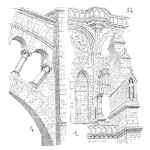
What is ‘Supportability’ and How Does it Relate to Reliability?
podcast episode with speaker Chris Jackson
What is supportability? Is it working out how many spare parts you will need (and when)? No. Is it working out how many maintainers or technicians you will need to keep your system working? Still no. What about working out what tools these maintainers or technicians need? No again. But many people think that this is what ‘supportability’ is. ‘Supportability’ is actually a characteristic of your product or system. Is the ‘ability’ for it to be ‘supported.’ And this can mean different things in different scenarios. It is also not a ‘number.’ If you have two comparable systems, but one needs fewer spare parts, is easier to maintain, needs fewer tools, has lots of sensors that give plenty of warning for maintenance, and so on … then it might be more supportable. But the main thing you need to ‘think about’ regarding supportability is that because it is a characteristic of a product or system … it has to be baked INTO the design. Want to learn more about how to do this? Join us for this webinar.
This Accendo Reliability webinar was originally broadcast on 25 April 2023.

To view the recorded video/audio and PDF workbook of the event, visit the webinar page.
Additional content that may be of interest
Supportability with Lucas Marino episode
Supportability with Lucas Marino episode
RCM and FMEAs episode
Maintenance v Product Reliability Engineering episode
Asset Criticality with Gregory Perry episode

Optimizing Servicing Intervals and Witchcraft. There actually is a difference.
Ever wondered if your servicing intervals are ‘good’? Do you know what ‘good’ is? Let's explore how establish proper intervals.

Reliability and Maintenance
Let’s explore how these two related fields are bound together in so many ways. What works well and what could work better.

 Ask a question or send along a comment.
Please login to view and use the contact form.
Ask a question or send along a comment.
Please login to view and use the contact form.
Supportability measures the degree to which a system can be supported both in terms of its inherent design characteristics of reliability and maintainability and the efficacy of the various elements of product support, to include the spare parts, tools, and training re- quired to operate and maintain it. – https://www.dau.edu/library/defense-atl/DATLFiles/Mar_Apr_2012/dallosta_simcick.pdf
I agree with much of your definition. However, we need to be a little bit more flexible. For example, something that does not get capture in many design critiques is the ability to use ‘generic’ parts. This means that we aren’t wed to a single or small number of suppliers that can perhaps limit our ability to get spare parts.
There are lots of other elements of ‘supportability’ that are unique to different organizations … but your definition is certainly capturing much of what supportability is for many people.
Supportability measures the degree to which a system can be supported both in terms of its inherent design characteristics of reliability and maintainability and the efficacy of the various elements of product support, to include the spare parts, tools, and training required to operate and maintain it. – https://www.dau.edu/library/defense-atl/DATLFiles/Mar_Apr_2012/dallosta_simcick.pdf
—————-
video link – https://www.youtube.com/watch?v=CmvKa26IdSc
————-https://www.youtube.com/watch?v=uhqsVk_30Xs
—————
condition based maintenance compared with preventative maintenance – video link – https://www.youtube.com/watch?v=_CoNZSLoAP4
——————
condition based maintenance – video link – https://www.youtube.com/watch?v=FHS-K8HmLh8
—————-
I agree that the elements in the definition are all about supportability … but I do find that many definitions can be a little restrictive. Are those spare parts from a single supplier? … single technology? … reliant on a mineral that is mined in very few places across the world? … likely to be ‘taken’ or ‘prioritized’ by governments in times of their national peril? … what about special storage for some spare parts that aren’t required by others? I would love to see a better, ‘higher level’ definition of supportability that includes the things above as examples … and not ‘absolute’ elements.
Very interesting presentation.
thank Carl, as you know, Chris does provide both engaging and informative webinars. cheers, Fred